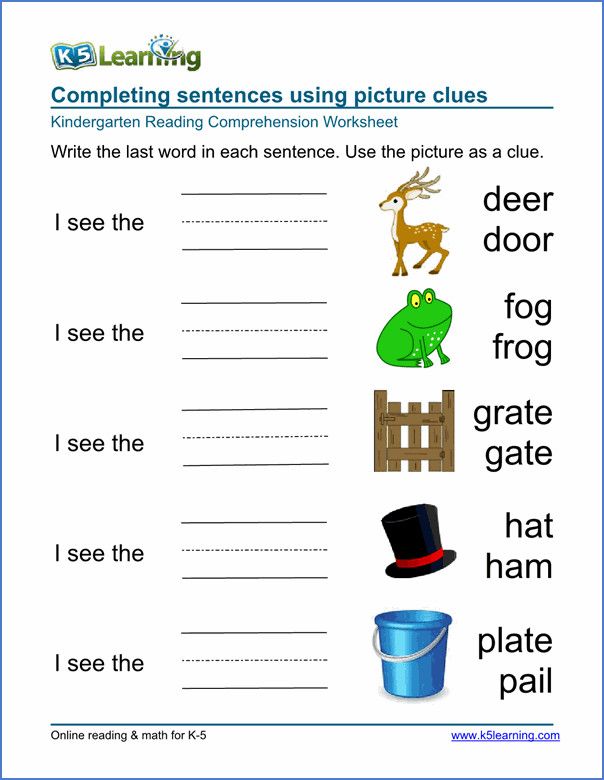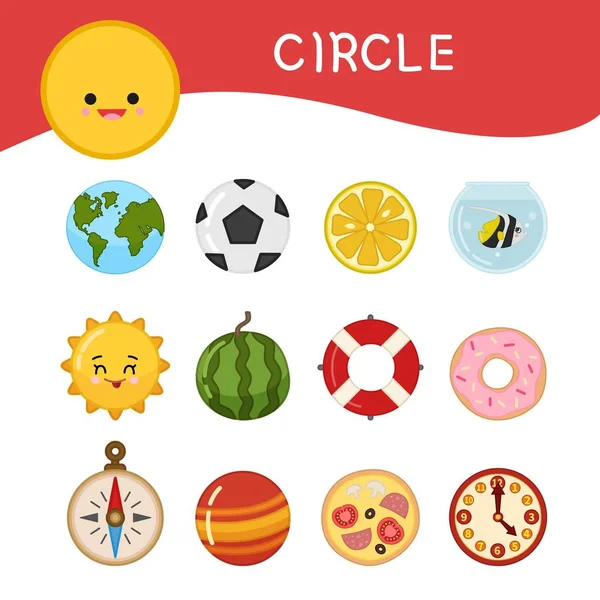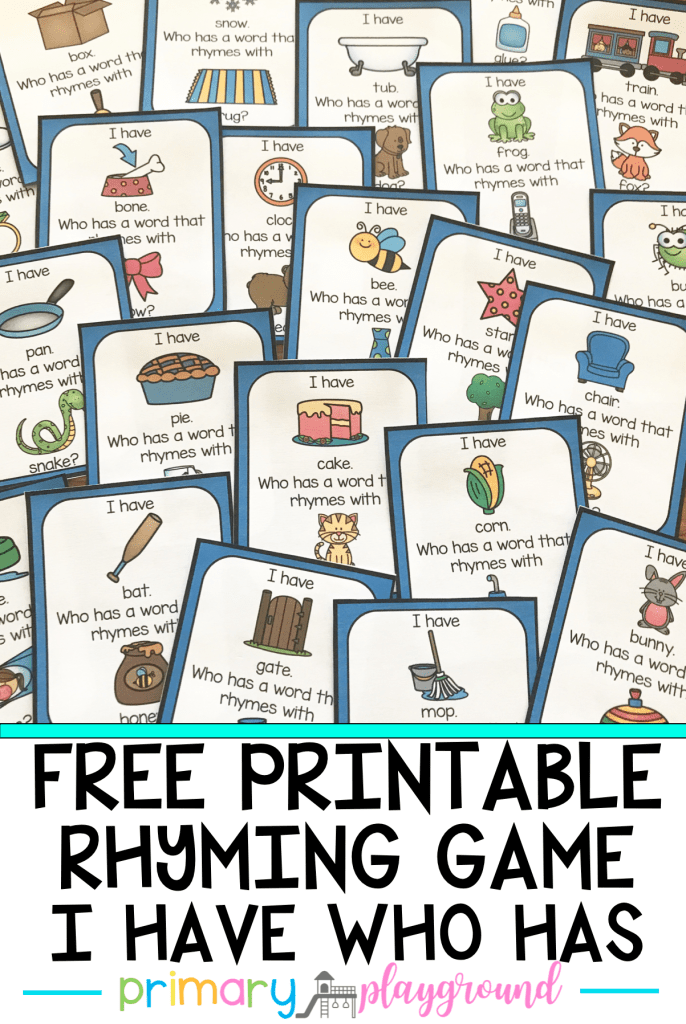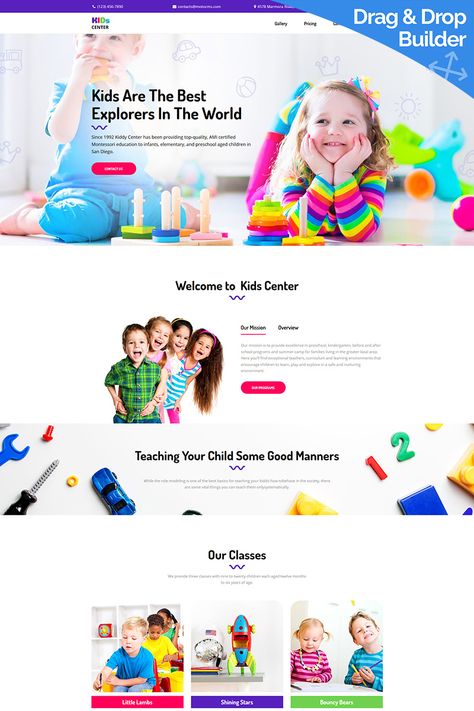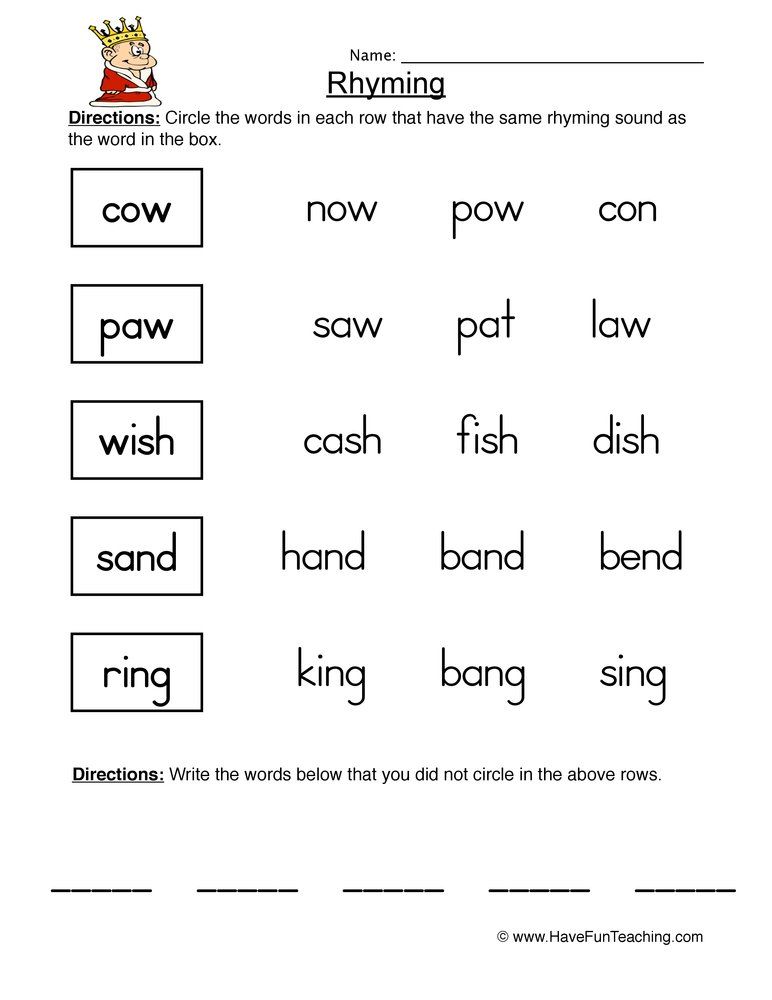Prediction in reading strategies
Predicting - Reading Strategies & Misconceptions
| Predicting is an important reading strategy. It allows students to use information from the text, such as titles, headings, pictures and diagrams to anticipate what will happen in the story (Bailey, 2015). When making predictions, students envision what will come next in the text, based on their prior knowledge. Predicting encourages children to actively think ahead and ask questions. It also allows students to understand the story better, make connections to what they are reading, and interact with the text. Making predictions is also a valuable strategy to improve reading comprehension. Students are able to make predictions about a story, based on what they have already heard, read, or seen. This in turn, will allow students to become actively involved in the reading process. To determine if their predictions are correct, students should be required to reread portions of the text to recall facts about the characters or events within the story. Students can also use a graphic organizer to predict the outcome of a story. They can do this by identifying clues within the text to predict how characters will behave and how significant problems in the story will be solved. When using a graphic organizer, students are able to stay fully engaged in the story as they capture their thoughts in a logical way. It is important for teachers to encourage children to record clues that either support or deny their predictions. Teachers can also allow students to revise their predictions in order to reflect on the clues that are found within the text. Making predictions encourages readers to use critical thinking and problem solving skills. Readers are given the opportunity to reflect and evaluate the text, thus extracting deeper meaning and comprehension skills. 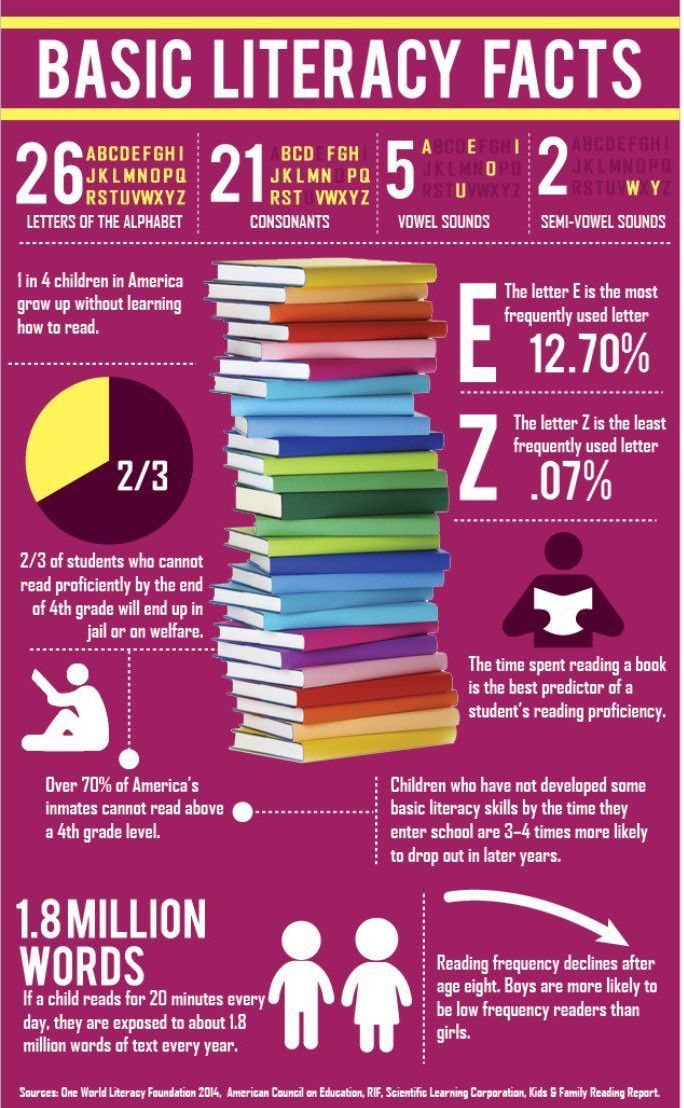 Students will also be more interested in the reading material when they connect their prior knowledge with the new information that is being learned.
Students will also be more interested in the reading material when they connect their prior knowledge with the new information that is being learned. |
How to Predict
Video - Background Information |
| Reading There are several activities that teachers can incorporate within their classroom, allowing students to effectively make predictions. | Math Students can make predictions based on patterns. When looking at a problem or example, students will be able to recognize different designs/outlines through repetition and observation. Predicting can be used in science when students conduct an experiment. For example, students may be studying a unit on plants and must predict what will happen to a plants growth if the amount of water is increased. Based on their observations and trials, students will be able to predict what will happen next as they gather data and support their answer with evidence. |
Resources:
Bailey, E. (2015). Reading Comprehension Skills: Making Predictions. Retrieved June 13, 2015, from http://specialed.about.com/od/readingliteracy/a/Reading-Comprehension-Skills-Making-Predictions.htm
Michel, J. (n.d.). Booksource. Retrieved September 18, 2015, from http://www.booksource.com/Departments/Resources/Teaching/reading-comprehension.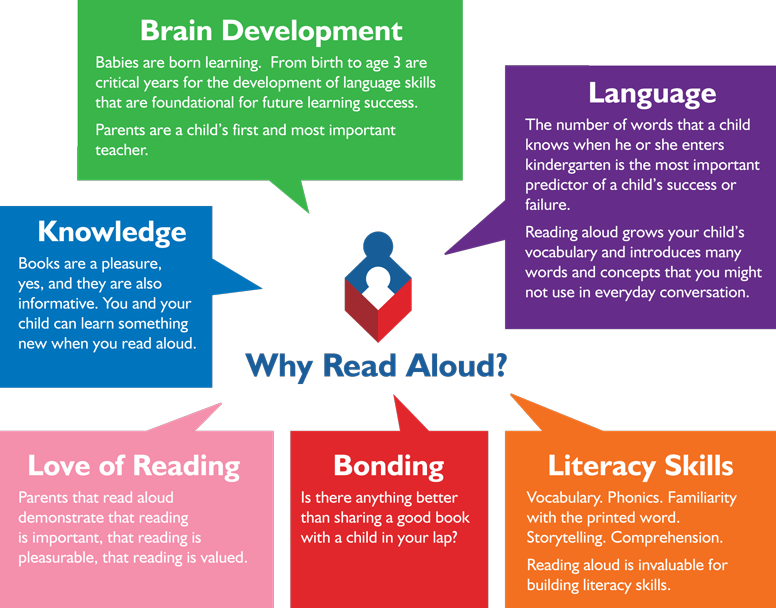 aspx
aspx
Brock, A. (2013, September 29). Reading Strategy: Prediction. Retrieved June 13, 2015, from https://www.youtube.com/watch?v=nsLD33rczFA
Raudenbush, D. (n.d.). Strategies for Clarifying a Prediction in Reading Comprehension. Retrieved September 18, 2015, from http://everydaylife.globalpost.com/strategies-clarifying-prediction-reading-comprehension-14740.html
How To Teach Students to Make Predictions While They Read — THE CLASSROOM NOOK
Love podcasts? Check out this post in form of a podcast episode on The Classroom Commute
Proficient readers make predictions naturally, without even knowing it. They predict what a book will be about based on the title, they predict why characters act a certain way, and they guess what will happen next when they get to the end of a chapter.
It’s important that teachers help teach young students to use this same reading comprehension strategy as well.
But - it takes explicit teaching for students to begin doing this on autopilot.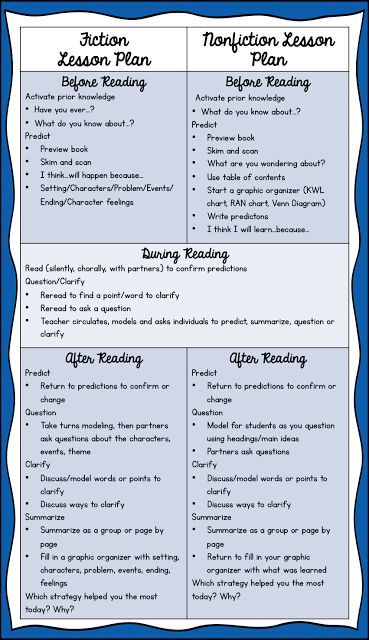
Predicting helps keep the reader’s mind engaged and activated as he or she works through a text. When students actively predict while reading, they stay connected to the text and can reflect upon, refine, and revise their predictions.
Let’s dive in to how to model, practice, and assess this reading comprehension strategy with your students.
Pssst…Want a super engaging and interactive way to have students practice predicting?
LINKtivity® Interactive Guides are EXACTLY what you need to make learning fun & accessible for all!
Get access to the Predicting LINKtivity® (+a growing library of LINKtivities!) inside of LINKtivity® Learning - an all-access pass to our entire vault of LINKtivities!
click here to Learn more
Below are the different categories within this post to help you jump to exactly what you need! Click on each category title to navigate there directly:
<< Back to categories
Predicting requires the reader to do two things: 1) use clues the author provides in the text, and 2) use what he/she knows from personal experience or knowledge (schema).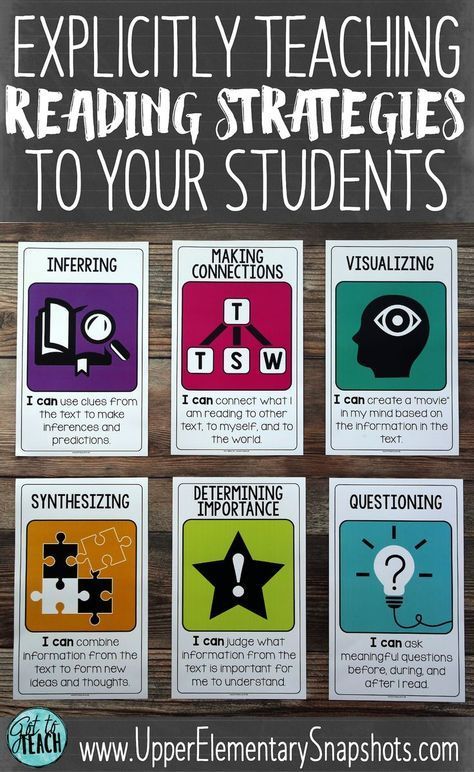 When readers combine these two things, they can make relevant, logical predictions.
When readers combine these two things, they can make relevant, logical predictions.
When students make predictions, we want them to be able to justify their thinking. In their predictions, we want to hear students drawing from both the text and their own schema. Asking students to justify their predictions, keeps them accountable for their thinking and helps them take their thinking deeper.
Readers should make predictions before, during, and after reading. There are several different kinds of predictions that a reader can make with a text. Readers can:
predict what the book will be about (Reader use titles and cover illustrations, etc.)
predict the author’s purpose (Is the author trying to convince us of something? Does the author want to teach us something? etc.)
predict future events in the book (Reader bases these predictions on previous events or character words and actions)
predict why an author included a specific text feature (What does it teach us? What information does it help clarify?)
predict what they will learn from the text or section within a text (Reader uses titles, headings, and subheadings to inform predictions)
predict what would happen next at the end of the book if it were to continue
Predicting involves more than just trying to figure out what will happen next.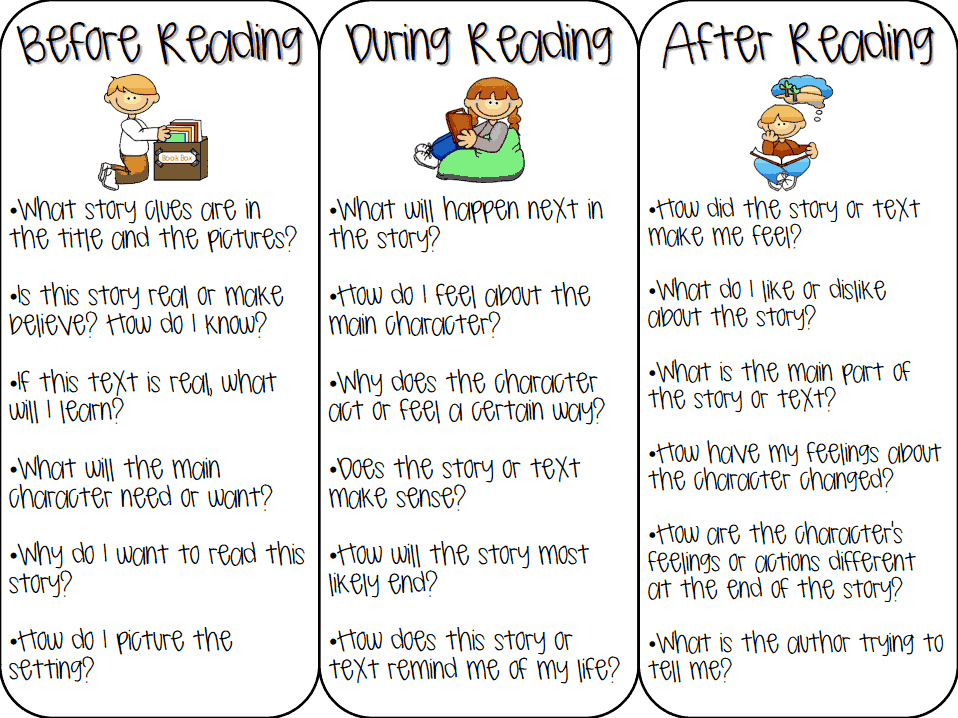 In fact, predicting requires students to draw on a variety of other secondary skills. As students look for evidence for their predictions, they also ask themselves questions, reread the text, recall information given in the text, infer, and draw conclusions.
In fact, predicting requires students to draw on a variety of other secondary skills. As students look for evidence for their predictions, they also ask themselves questions, reread the text, recall information given in the text, infer, and draw conclusions.
Making predictions helps set the stage for students to monitor their own comprehension. Making predictions naturally encourages the reader to want to continue reading in order to find out if their predictions were correct or not. By making predictions and then reading on to see if those predictions were correct helps to let the students know if their thinking was on the right track. Using the prediction strategy correctly, truly will result in comprehending the text more fully.
<< Back to categories
The concept of predicting will most likely not be new to students. Activating this skill while reading, however, may require some practice. Since students may not be stopping to make predictions as they read, explicit instruction to train students to do so is essential.
You can introduce this reading comprehension strategy with a simple exercise. Tell students that you are going to play a quick game that will require them to guess what you are going to do next in your school day.
Explain that you are going to leave and re-enter the room, providing clues as to what you are going to do next. Here are two example scenarios that you might use:
When you re-enter the room, grab a soccer ball (or other playground equipment), put on your coat, and grab your whistle. Have students predict what you are going to do next (go out for recess).
When you re-enter, go to your desk and pull out your current read-aloud book and have a seat where you normally share your read-aloud with the class. Have students predict what you are going to do next (read-aloud to the class).
In either case, have students share out the clues that they used to make their guesses. Explain that when students made a guess as to what you were doing next, they were making predictions.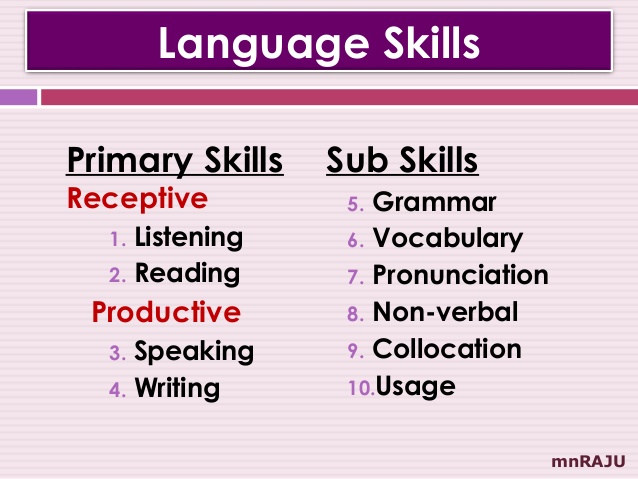 Tell students that readers make predictions all the time in the books that they are reading by using clues that the author gives them, and by using their own personal knowledge. In the scenarios above, the students used the clues from your actions plus their knowledge from past experiences to make their guesses as to what you were going to do next.
Tell students that readers make predictions all the time in the books that they are reading by using clues that the author gives them, and by using their own personal knowledge. In the scenarios above, the students used the clues from your actions plus their knowledge from past experiences to make their guesses as to what you were going to do next.
<< Back to categories
Once students are in the mindset of making predictions, you can begin modeling through a read-aloud. Picture books work well, even with older students, to help model this strategy from start to finish.
To prepare for modeling this strategy, choose a text that works great with making predictions. (see book suggestions at the end of this teacher guide). Preview the text and plan for places that you will stop to model making predictions. If desired, write your predictions on Post-it notes and place them on the pages where you plan to share your predictions.
Create an anchor chart, like shown below, to record your predictions together as a class. (Note: For younger students, you can simplify this chart by putting only writing “reflection” in the 3rd column)
(Note: For younger students, you can simplify this chart by putting only writing “reflection” in the 3rd column)
While reading your text to students, stop to discuss your predictions. Write your predictions on your chart (or place up your prepared Post-it notes) for students to see in the “My Predictions” column. Discuss WHY you made each prediction. Then, in the “Text Evidence” column, record evidence from the text that helped inform your predictions. As you read, fill out the “Revise, Refine, and Reflect” section for each prediction to note whether or not your predictions were correct, and how it informed your thinking. Explain that as you reflect on your predictions, sometimes you need to refine (make more clear), or even revise (change) your predictions based on new information that the author may give you. Here’s an example using the book Thank You, Mr. Falker by Patricia Polacco: (affiliate link)
When first starting out, it might be helpful to give students some thinking prompts to help guide their predictions. Here are a few examples:
Here are a few examples:
I think ________ will happen because _________
I bet _______
I’m guessing _______
Since ____ happened, I think that _______ will happen
I think the character will ___ because _______
I think I will learn ______
Another thing to focus on with students while making predictions is helping students make logical predictions that make sense. Again, you will need to model this specifically. Model both logical and not logical predictions. For example, when reading Thank You, Mr. Falker a logical prediction might be: “Since Tricia has been staying after school with Mr. Falker, I predict that she will finally learn how to read.” A prediction that is not logical would be: “I predict Tricia will read the book The Three Little Pigs.” The second prediction does not use any text clues to form the prediction.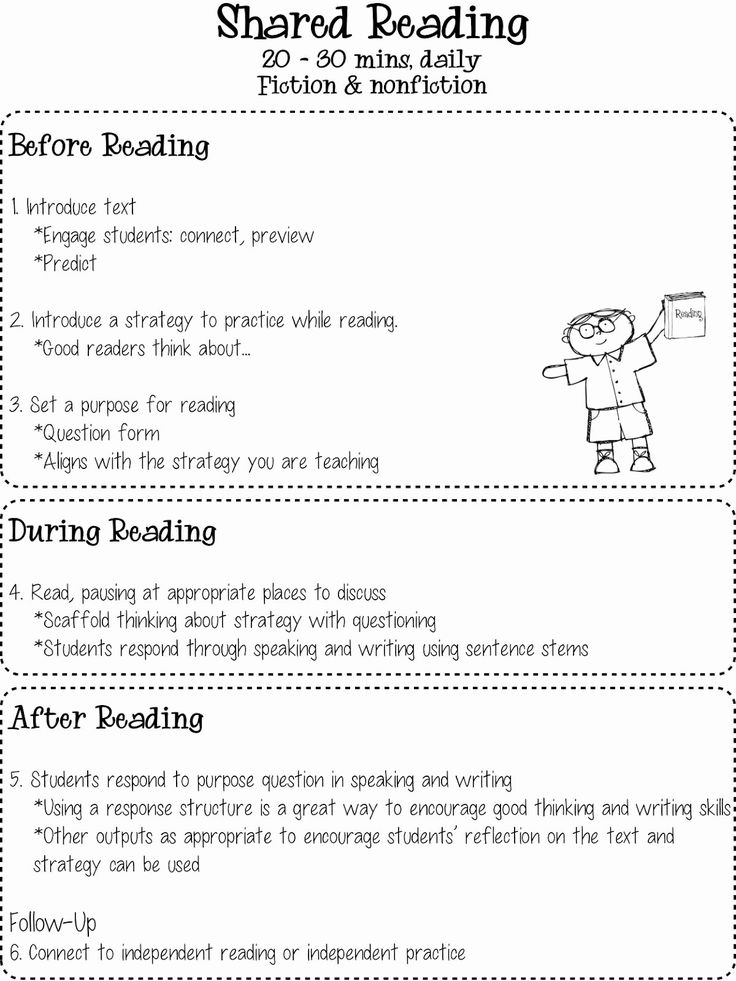 Although it is about Tricia reading, nothing in the text suggests that reading The Three Little Pigs would be a logical prediction.
Although it is about Tricia reading, nothing in the text suggests that reading The Three Little Pigs would be a logical prediction.
Struggling readers often make predictions that are not logical by simply choosing something remotely related to the topic or event in the book. This is why it is so important to help students rely on text evidence when making predictions as well as reflecting on each prediction. Help students to use phrases such as: “this prediction makes sense because in the text is says…” or “this is a logical prediction because.”
Model making predictions in both fiction and nonfiction texts. In fiction texts helps students to make predictions about what the book might be about, what might happen next, or what a character might say or do. In nonfiction, students can predict what they might learn from the text, what information will be included within headings and subheadings, the definition of new content words, or why authors include certain text features.
<< Back to categories
Of course we want students to be able to make predictions regardless or what book they are reading. However, as students have their first experiences working this this strategy, choose books that lend themselves to makgin predictions will help students to have a quick win, and easily see this strategy in action.
Be sure to choose a book that provide obvious opportunities for students make predictions. This will help set students up for success and will train their brains to stop and think about what is going on in the text in order to make logical predictions.
Here are some of my favorites to use when modeling predicting (affiliate links):
Two Many Tamales by: Gary Soto
Enemy Pie by: Derek Munson
Those Shoes by: Maribeth Boelts
What Do You Do With a Tail Like This? by: Steve Jenkins
<< Back to categories
CREATE SIMPLE VISUALS TO REMIND STUDENTS TO PREDICT
When first using a new reading strategy, students need constant reminders.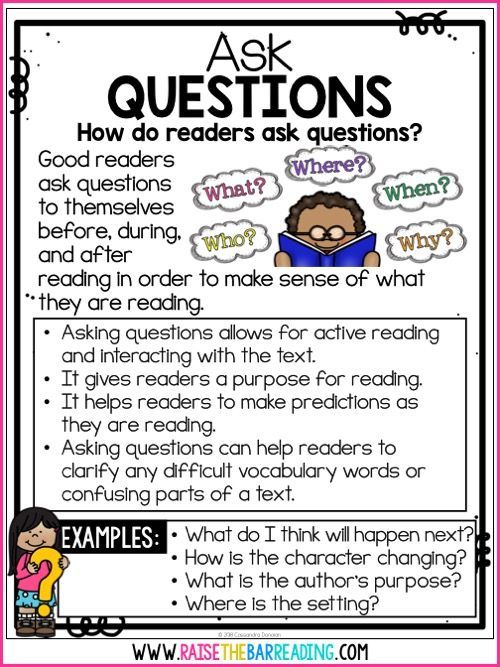 Visuals such as bookmark to use while reading, or a classroom poster that is displayed on a reading strategy bulletin board work wonderfully to nudge students to make predictions while reading.
Visuals such as bookmark to use while reading, or a classroom poster that is displayed on a reading strategy bulletin board work wonderfully to nudge students to make predictions while reading.
Continue to create anchor charts displaying the predictions that you make during read-aloud texts. You can even create a class anchor charts where students post their own predictions about a book that you are reading together as a class.
8 FREE Reading Strategy Bookmarks
Grab these FREE student bookmarks to help your students use reading comprehension strategies while reading.
There are a total of 8 bookmarks that explain reading strategy in kid-friendly language and is the perfect reference for students to use during independent or small-group reading time.
Click here to get access
USE LINKtivity DIGITAL LEARNING GUIDES
New to LINKtivities? >> CLICK HERE
If you know me, even just a little bit, then you know I’m about to talk about LINKtivity digital learning guides.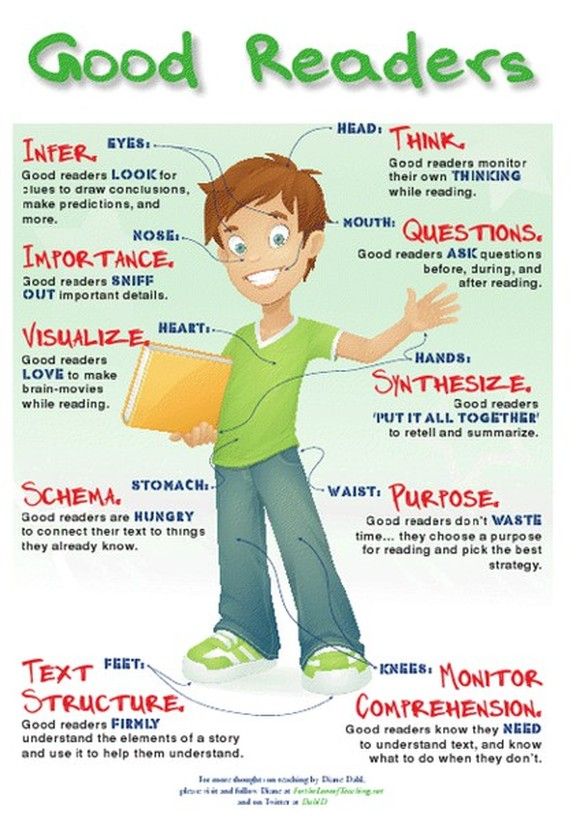 Why? Because LINKtivities are interactive, engaging, and so fun for learning and practicing new skills like reading strategies.
Why? Because LINKtivities are interactive, engaging, and so fun for learning and practicing new skills like reading strategies.
I created a LINKtivity® specifically for teaching students how to make predictions while reading. Watch the video below for a sneak-peek!
Here’s how it works:
In the Predicting LINKtivity, students first watch a short animated video clip that quickly catches their attention with fun doodles and images. The clip introduces what the strategy is and how readers use it.
From there they read alongside their “virtual reading buddy” to see the strategy applied to a text. While clicking through the digital book, each time the student comes across a thought bubble, they click on it and are brought to a new slide in the LINKtivity guide to see what their reading buddy is thinking!
Then, to take their learning to the next level, students read 3 additional high-interest reading passages to practice the strategy on their own. In a similar fashion as they did with their reading buddy, students click through the digital storybook and stop to make predictions along the way.
In a similar fashion as they did with their reading buddy, students click through the digital storybook and stop to make predictions along the way.
HAVE STUDENTS KEEP TRACK OF THEIR PREDICTIONS WHILE READING
Having students write down their predictions and then reflect, refine, and revise them as they read, is key when it comes to informing you of their understanding of the strategy. From their written predictions you can see if their predictions are meaningful, relevant, and logical to the story that they are reading.
Writing down their predictions also keeps them accountable for their learning and gives you an informal assessment.
<< Back to categories
Assessment, whether it be formal or informal, drives instruction. For more informal assessments, take notes about a students use of the predicting strategy during reading conferences or in small groups. Considering the following when observing the students’ use of the strategy:
Considering the following when observing the students’ use of the strategy:
Are students making predictions prompted or unprompted?
Can students support their predictions with text evidence?
Do students draw on personal experiences to inform their predictions?
Are students monitoring if their predictions were correct or incorrect?
Are the students’ predictions logical? Do they make sense to the story?
Finally, having a rubric written in kid-friendly language is especially helpful when providing feedback to a student on their ability to make predictions. The rubric can provide clear guidelines on how to make predictions while reading.
<< Back to categories
Want to get your hands on the Predicting LINKtivity®?
Join the LINKtivity® Learning Membership and start using this ready-to-go resource for predicting that includes:
a teacher guide
a student LINKtivity
a student recording sheet
a student-friendly rubric
Get access to the Predicting LINKtivity® PLUS all the other reading comprehension strategies inside of LINKtivity® Learning - an ALL-ACCESS pass to every single LINKtivity® created (INCLUDING all 7 reading strategy LINKtivities!)
Learn more about LINKtivity® Learning
<< Back to categories
Reading, Free ResourcesThe Classroom Nookpredicting, Reading Strategy
0 LikesLibrary Navigator: Strategies for Reading
Strategy is a set of methods arranged in a certain sequence and aimed at reaching certain targets.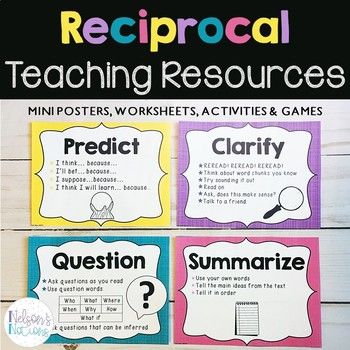
Strategy reading - the path and program of action of the reader. Selected for a specific purpose text. The term was born at the dawn of psycholinguistics in the works of K. Goodman and P. Kolers.
Strategies readings can be used in discussions and commented readings, in library lessons, become part of the interactive elements cultural event.
1. Classification of reading strategies:
| Feature | Subspecies | |
| By relation to text | Pretext | Cerebral assault Landmarks anticipations dissection question preliminary questions Battery questions Glossary Alphabet round table Reading in a circle Read and speak out Theater at the microphone |
| Text | Timeout Reading with stops Reading in litters Strategies guided reading Strategy reader responses | |
| Posttext | Battery questions after text Where answer? Checking sheet | |
| Complex (all above steps) | ||
| By attitude to mental activity | cognitive (with one type of text) | Intellectual-cognitive Information and cognitive Cognitive-mnemonic |
| Metacognitive (with all types) | Ask author reasoning out loud Pre-, post-doc assignments Verification sheets Definition difficulty understanding | |
| Strategy speech activity | Audition Speaking Letters | Communication Reflective |
2.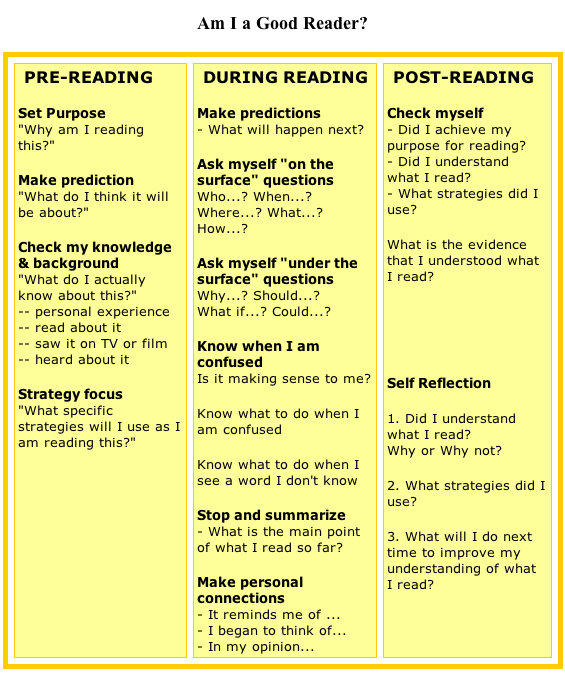 Description of reading strategies
Description of reading strategies
| Strategy name | Definition |
| 1. Pre-text strategies activities | Update previous knowledge and experience related to the text. |
| 1.1. Brainstorming | Readers name associations, arising from the title of the text. |
| 1.2. Anticipation landmarks | The librarian prepares some judgments related to the text and invites readers to mark those with which they agree. |
| 1.3. Battery of questions | Identification, through surveys, readers' knowledge of the topic of the text. |
| 1.4.Round table alphabet | Readers receive a sheet divided into cells, each with a letter of the alphabet. Task - write in each of them a word related to the topic of the text. |
| 1.5. Reading in a circle | Alternate reading aloud for better understanding and enhancing the attention of readers. |
| 1.6 Read aloud and speak out | Paired Reading Strategy: First the participant reads aloud, and the second speaks on a certain librarian topic (make a comment, raise a question, predict the continuation, identify difficult or incomprehensible). |
| 1.7. Theater at the microphone | Role reading. |
| 2. Texting strategies activities | Called to do the reading interactive, teach how to combine parts of the text into a single whole, conduct monitoring understanding of the content of the text. |
| 2.1. Timeout | The librarian determines the time for reading, then readers retell the content of the text in pairs, summarize or make predictions about future developments. |
| 2. | After reading the passage, the reader answers questions from the librarian. |
| 2.3 Reading with marks | The reader makes notes: understood, I don't understand, we need to discuss. The strategy is aimed at reflecting one's understanding text. |
| 2.5. Directed strategy reading | Separate passages of text are read sequentially with stops for discussion on issues that offered to young readers by adults. |
| 2.6. Reader strategy responses | Recording reader responses to questions about the main events of the story, their nature, the problems of the characters, the climax and plot organization. |
| 3. Post-text strategies | Thinking about the text and doing assignments. |
| 3.1. Battery of questions after text | Issues related to understanding text and its critical evaluation. |
| 3.2. Where's the answer? | Finding an answer to a question in text, between lines, matching different parts of the text |
| 3. | Reader at home or in the library answers the questions of the "checklist" compiled by the librarian. |
| 4.Cognitive strategies | Assume reflection readable text. The strategy is suitable for reading educational scientific texts. |
| 4.1.Intellectual-cognitive | Highlighting while reading key words, concepts, establishing connections and grouping, classification, induction and deduction. |
| 4.2. Information-cognitive | Search for specific information in text according to the given criteria. |
| 4.3 Cognitive-mnemonic | Assumes an organized memorization using keywords, schemes. Also includes strategies "landmarks anticipation of information" and "K-W-L" - "I know - I want to know - I found out." |
| 5. Metacognitive Strategies | Knowledge through the mechanism of self cognition: monitoring and self-monitoring of text comprehension, search for problematic questions in the text, tasks. Effective when working with any text and may include pre-, post- and text activities. |
| 5.1. Ask the author | The reader learns to think while reading by searching for answers to the difficult ones previously marked by the librarian places in the text. |
| 6. Communication Strategies | Interaction with the author and by other readers. Includes "G-S-R" strategies (abstract - a brief retelling - retelling), "RAFT" (reading taking into account the chosen role). More details - in the educational and methodical allowances Reading+. Preparing teachers and librarians for implementation interdisciplinary program "Fundamentals of semantic reading and working with text": study method. allowance / ed.-comp. and scientific editor T. G. Galaktionova. - M.: RSHBA, 2018. - S. 53-55. |
| 7. Reflexive Strategies | Combine reading with stops and role play. The librarian distributes the roles of expert, reporter and observer between readers previously divided into three. |
Materials for scripting events using reading strategies:
methodical recommendations for reading aloud [Electronic resource]: website // Samara Regional children's library. – Access mode: http://www.sodb.ru/node/486.
tricks semantic reading [Electronic resource]: website // Methodical workshop "Development and implementation of the semantic reading strategy in the educational space of the school on stage of the introduction of the Federal State Educational Standard LLC. – Access mode: https://sites.google.com/site/ucitelamv/home/klassifikacia-priemov-smyslovogo-ctenia.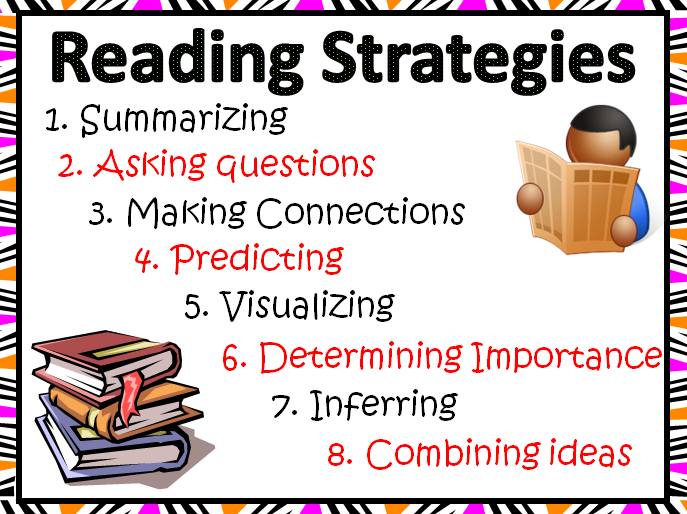
Development semantic reading in the context of the implementation of the Federal State Educational Standards of the OO [Electronic resource]: a collection of abstracts international scientific and practical conference. April 7, 2016 / State autonomous educational institution of additional professional education "Institute for the Development of Education and Social Technologies". - Kurgan, 2016. - 156 p. - Access mode: http://kna-s6.edu.27.ru/files/uploads/docs/smuslchten/oput/megdunarodnaya_nauchno_prakticheskaya_konferentsiya.pdf.
Romanicheva, E. S. Reader. Reading. Book: dictionary / E.S. Romanicheva, G. V. Prantsova. – M.: Bibliomir, 2018. – 208 p.
Smetannikova, N. N. Education of the reader in a culture-creating model of education [Electronic resource]: website // Interregional Center for Library Cooperation. - Access mode: http://www.mcbs.ru/files/File/smetannikova(1).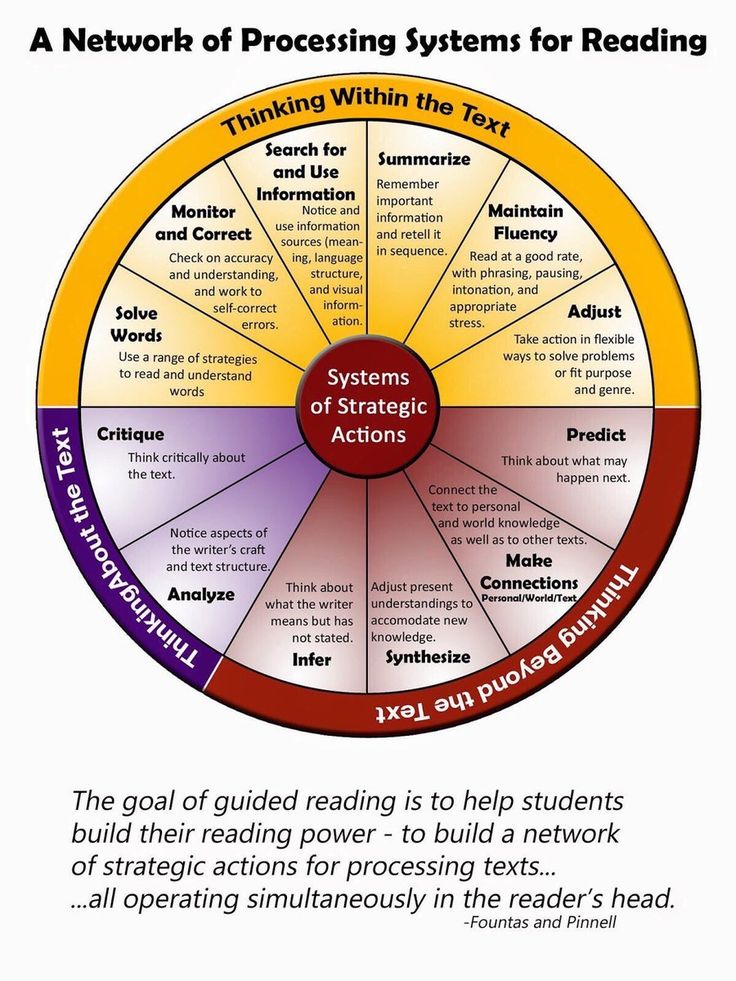 pdf.
pdf.
Strategies reading [Electronic resource]: site // Solnechny. – Access mode: http://www.selezneva-lichnost.ru/index.php/strategii-chteniya.
Reading with stops [Electronic resource]: blog // There is happiness! – Access mode: http://bdb100ktn.blogspot.com/2015/02/blog-post_27.html.
LIST SOURCES
1.
Zagashev AND ABOUT. Reading in the library. Strategy "Reading with stops" / I. O. Zagashev. - M.: Chistye Prudy, 2010. - 31 p.
2.
Prantsova GV, Modern reading strategies: theory and practice. meaningful reading and work with text: textbook / G. V. Prantsova, E.S. Romanichev. - 2nd ed., correct and additional - M. : FORUM, 2015. - 368 p.
3.
Read+.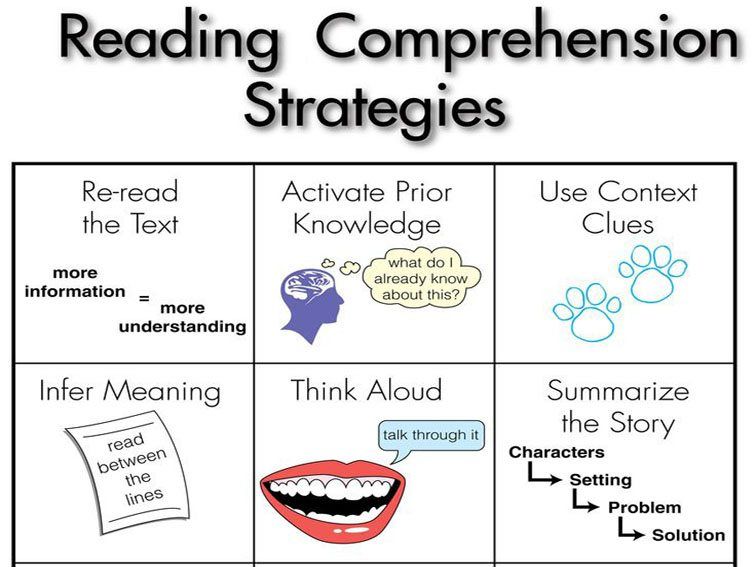 Preparation of teachers and librarians for the implementation of an interdisciplinary program "Fundamentals of semantic reading and working with text": textbook-method. allowance / auth.-stat. and scientific editor T. G. Galaktionova. – M.: RSHBA, 2018. – 164 p.
Preparation of teachers and librarians for the implementation of an interdisciplinary program "Fundamentals of semantic reading and working with text": textbook-method. allowance / auth.-stat. and scientific editor T. G. Galaktionova. – M.: RSHBA, 2018. – 164 p.
R. S. Sakharenkova
Effective strategies for working with text in the classroom at school
The ultimate goal of teaching Russian is practical literacy and language competence. The basis of the content of literature as an academic subject is reading and textual study of works of art.
Work with the text as the main didactic unit allows schoolchildren to combine the activities of developing practical skills of literate writing and speech development.
Every teacher dreams that all students come to the lesson prepared: they have completely read this or that work or paragraph. And not just read, but understood the meaning of the text read.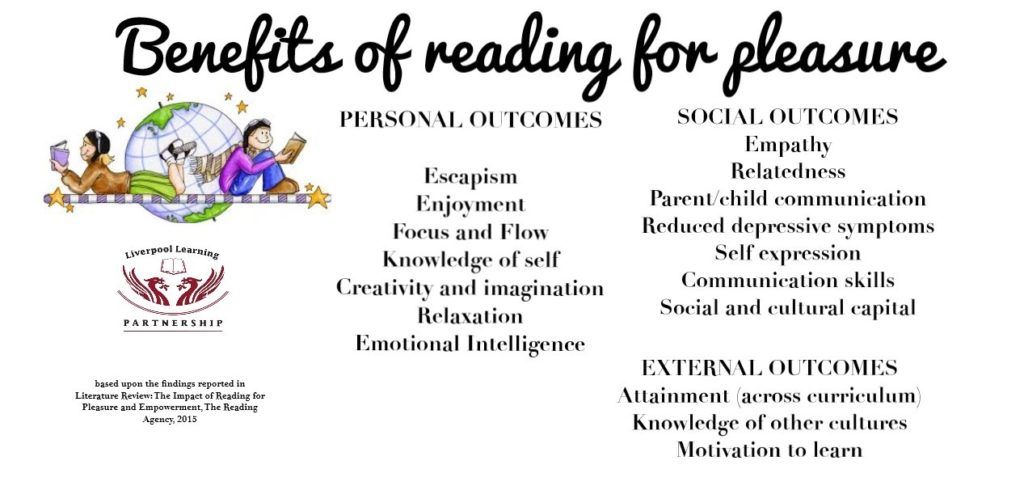 During the final certification, the graduate must also understand the meaning of the read text. Whether it is a task to the text or the text itself.
During the final certification, the graduate must also understand the meaning of the read text. Whether it is a task to the text or the text itself.
Teachers working in grades 9 and 11 know that most mistakes are made due to misunderstanding of what is read, as well as when reading the assignment itself.
Teaching a child to read “correctly”, “effectively”, “productively” is an important task for a teacher. That is why the technology of productive reading (PRT), developed by Professor N. Svetlovskaya, acquires a leading role and contributes to the achievement of the results that are mentioned in the new standards.
The technology is universal and can be used in lessons of any cycle.
It is aimed at the formation of all universal educational activities: cognitive, communicative, regulatory, personal.
The technology of productive reading differs sharply from the traditional technology of transferring ready-made knowledge to a student.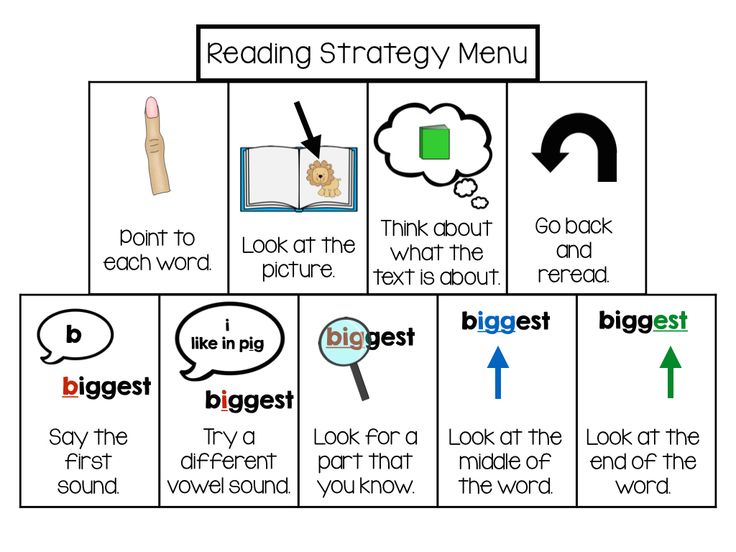 The teacher organizes the children's research work in such a way that they themselves "think" about solving the key problem of the lesson and can themselves explain how to act in new conditions. The teacher becomes a partner, a mentor, an observer.
The teacher organizes the children's research work in such a way that they themselves "think" about solving the key problem of the lesson and can themselves explain how to act in new conditions. The teacher becomes a partner, a mentor, an observer.
The developed technology includes three stages of working with text, a three-stage process.
The goal of is the development of anticipation (the ability to guess, predict the content of the text). Task - to develop motivation for reading the text
1. Strategy "Forecast by headline".
Task: think about what can be discussed in the story of K.G. Paustovsky "Warm bread", in the work of P.P. Bazhov "Mistress of the Copper Mountain", etc.
– Try to predict the content by the first line of the story…Remember the name of the story….Does the content of the story match the title?
Give examples of such discrepancies.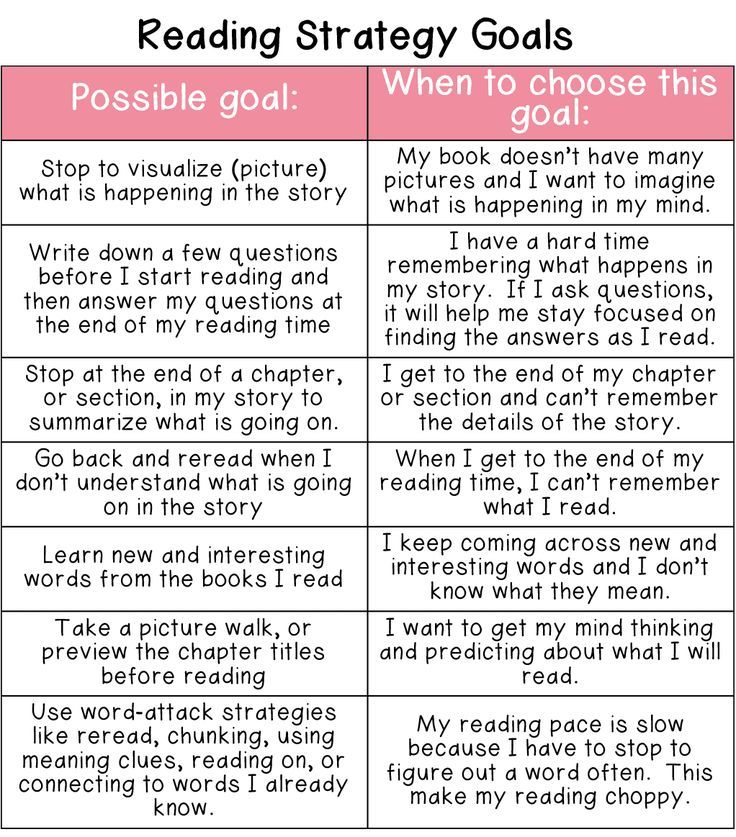
Associative bush (circle, row). Today we are going to read and discuss the topic… What associations do you have about the stated topic?
2. Strategy "Brainstorm" ("Basket of ideas").
Task: answer the questions before reading the text (fairy tales "Warm Bread") - What do you know about K. G. Paustovsky? What do you think the story will be about? Who can be the main character? What event in the story can be described.
3. Strategy "Image of the text".
Task: check your assumptions. Based on the words taken from the text, try to make a short plot story. The title of the story is given.
4. Strategy "Battery of questions".
Task: make up questions to the text according to the title, according to the illustrations.
5. Glossary strategy.
Task: look at the list of words and mark those that can be related to the text.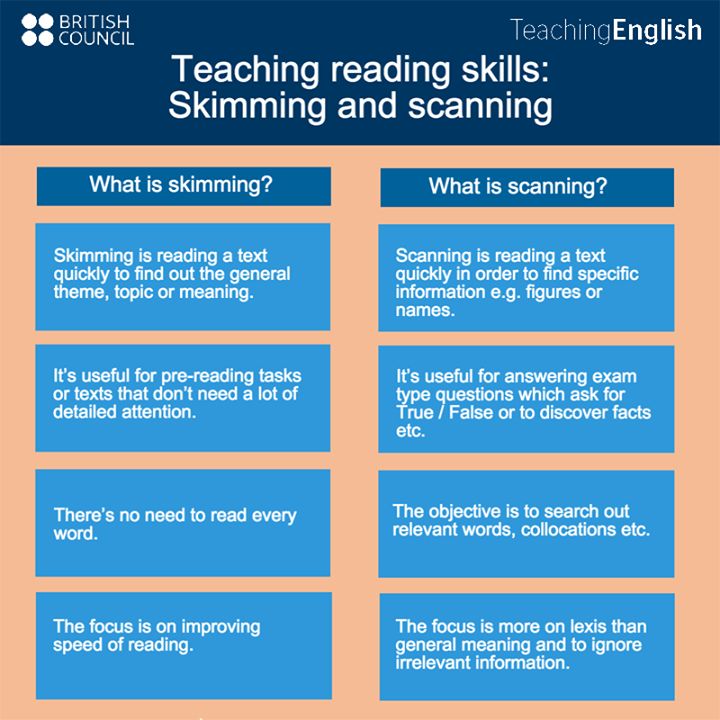 When you finish reading the text, go back to these words and look at their meaning and the use of words used in the text.
When you finish reading the text, go back to these words and look at their meaning and the use of words used in the text.
6. Strategy “We compete with the writer”.
Task: try to predict the content of the book by looking at the illustrations. One student offers his version, the rest complete it.
7. Strategy "True and False Statements".
8. Strategy I know, I want to know, I found out.
Stage 2 - stage of text activity.
The purpose of is to understand the text and create its reader's interpretation, summarizing part of the read text, asking questions of a generalizing nature, making assumptions about the further development of the plot and the role of characters in the composition of the text, etc.).
The main task of is to ensure the full perception of the text. The main strategies at the stage of text activity are dialogue with the author, commented reading.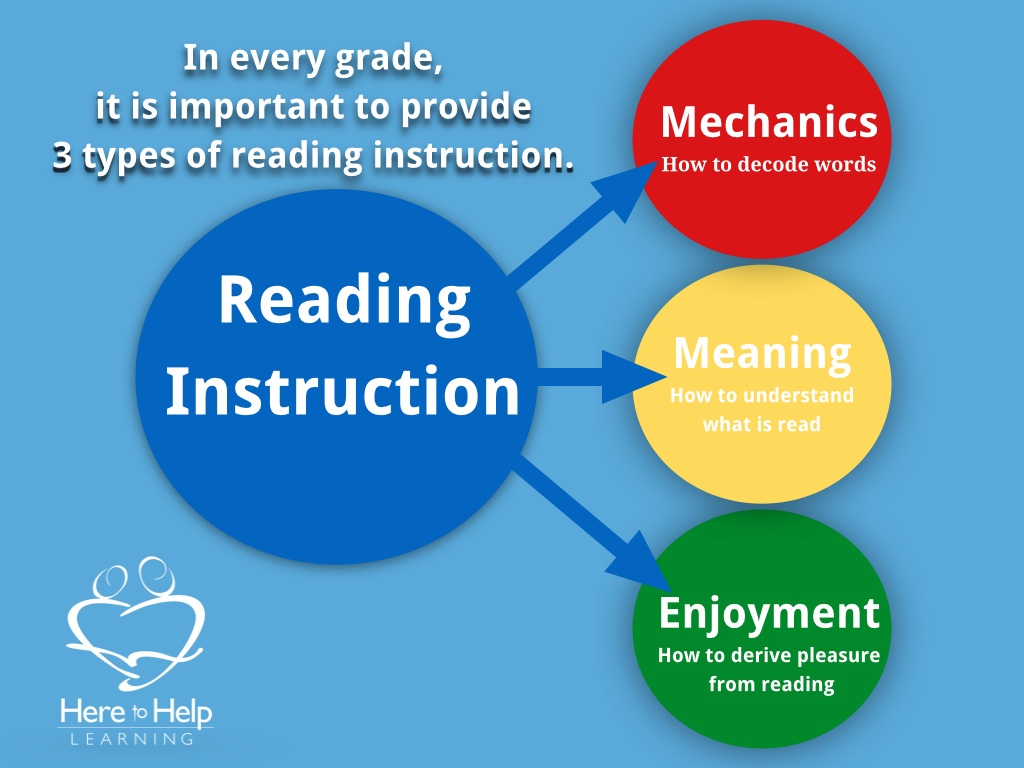
1. Strategy "Reading in a circle". The text is read in turn (each "circle member" reads a paragraph). After this, a stop follows: everyone asks questions to the read passage. If the question cannot be answered (it does not correspond to the text), then the question is considered incorrect. * All correct questions can be recorded.
2. Silent reading with questions strategy.
3. Strategy “Reading to yourself with notes. (Insert)" . Marginal notes: + - knew; - - new; ? - Interesting; V is unclear. Others are possible: B - question; O - answer; Z - I know; N - new; And - interesting; X - I want to know; C - ask; U to clarify.
4. Strategy "Reading with stops". Reading the text with stops, during which tasks are given in the form of questions: some are aimed at checking understanding, others - at predicting the content of the next passage.
5. The strategy "Pose a problem - offer a solution. " Remember what problems the heroes of the work face (the problem is formulated and recorded in an oval). Next, the children can name several problems, students are divided into groups and offer all kinds of solutions to problems.
" Remember what problems the heroes of the work face (the problem is formulated and recorded in an oval). Next, the children can name several problems, students are divided into groups and offer all kinds of solutions to problems.
6. Strategy "Creating a question plan". The student conducts a semantic grouping of the text, highlights the strong points, divides the text into semantic parts and titles each part with a key question…….
Stage 3 - the stage of post-text (post-text) activity.
The purpose of is to correct the reader's interpretation in accordance with the author's meaning.
The main task of is to provide in-depth perception and understanding of the text, raise a question to the text as a whole, followed by a conversation, the result of which should be an understanding of the author's meaning. Re-addressing the title, illustrations, performing creative tasks.
2.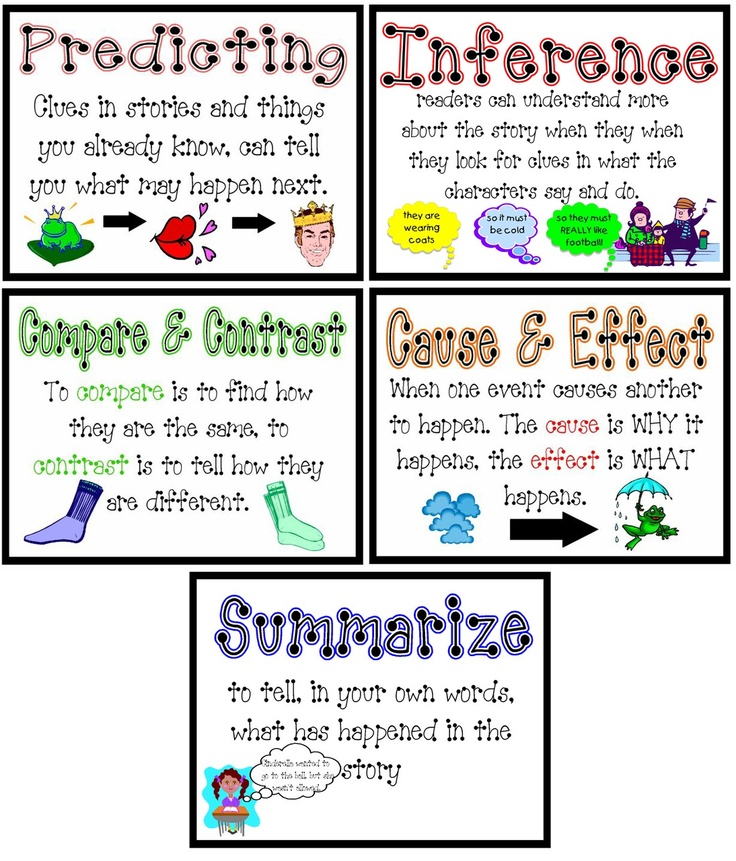 Question tree strategy Crown – what? Where? When? Barrel - why? How? Could you? Roots - how to relate the text to life? With current events? What is the author trying to show?
Question tree strategy Crown – what? Where? When? Barrel - why? How? Could you? Roots - how to relate the text to life? With current events? What is the author trying to show?
3. Strategy "Bloom's Cube" (Benjamin Bloom is a famous American teacher, author of many pedagogical strategies = technician).
The beginnings of the questions are written on the faces of the cube: “Why?”, “Explain”, “Name”, “Suggest”, “Think up”, “Share”. The teacher or student rolls the die.
It is necessary to formulate a question to the educational material on the side on which the cube fell.
The “Name” question is aimed at the level of reproduction, that is, at the simple reproduction of knowledge.
Question "Why" - the student in this case must find cause-and-effect relationships, describe the processes occurring with a certain object or phenomenon.
Question “Explain ” – student uses concepts and principles in new situations.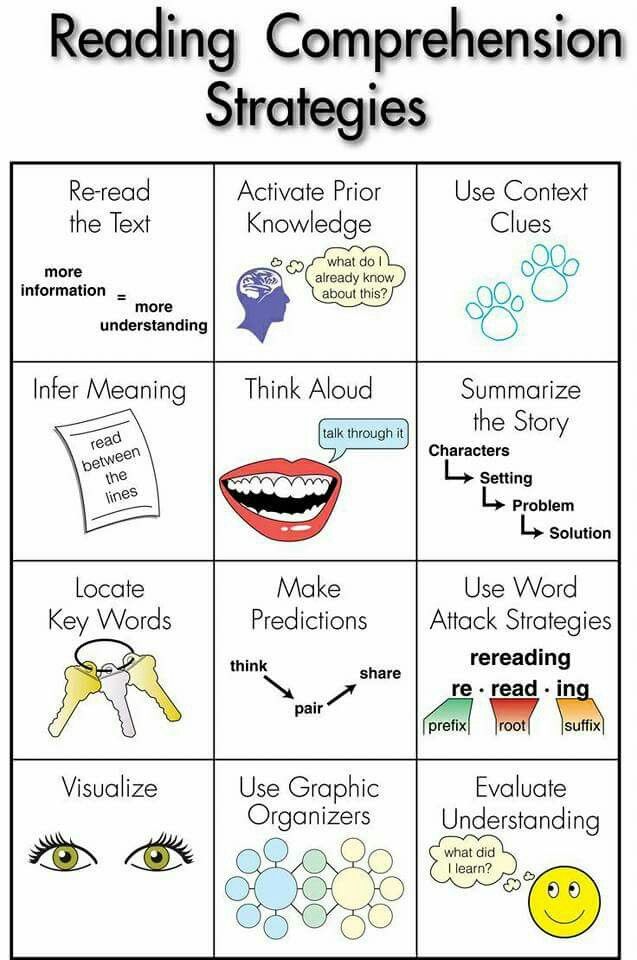

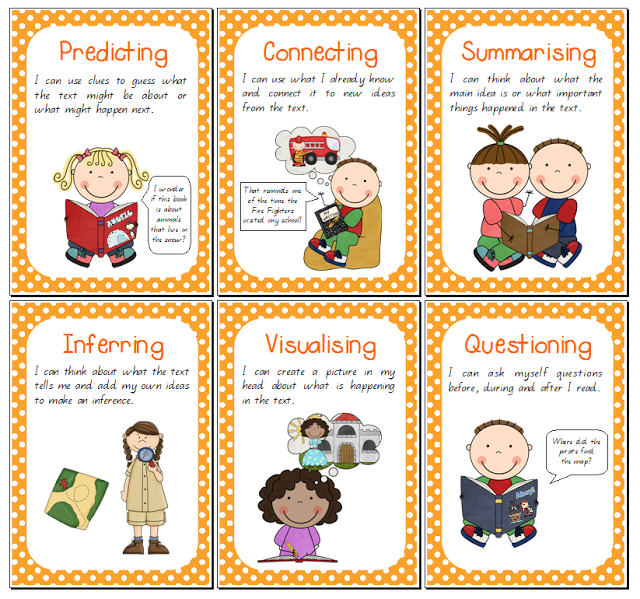 To introduce this reading strategy, teachers can hand out photographs from either a newspaper or a magazine. Students will then make a prediction with the evidence from the picture, their prior knowledge, or examples from their own experiences. Teachers can also create a prediction pail. When introducing a new story, students first take a picture walk and then make a prediction based on the title, illustrations, and diagrams. This allows students to use clues and evidence from the text to make accurate predictions. The children then write their predictions on a slip of paper and put them in the pail. Next, students read the story within their small reading groups. After the story is completed, they are able to share their predictions and make connections to the other responses that were shared.
To introduce this reading strategy, teachers can hand out photographs from either a newspaper or a magazine. Students will then make a prediction with the evidence from the picture, their prior knowledge, or examples from their own experiences. Teachers can also create a prediction pail. When introducing a new story, students first take a picture walk and then make a prediction based on the title, illustrations, and diagrams. This allows students to use clues and evidence from the text to make accurate predictions. The children then write their predictions on a slip of paper and put them in the pail. Next, students read the story within their small reading groups. After the story is completed, they are able to share their predictions and make connections to the other responses that were shared.  From this information, students will be able to make a prediction with the data that they collected to confirm their answer as they justify their reasoning.
From this information, students will be able to make a prediction with the data that they collected to confirm their answer as they justify their reasoning. 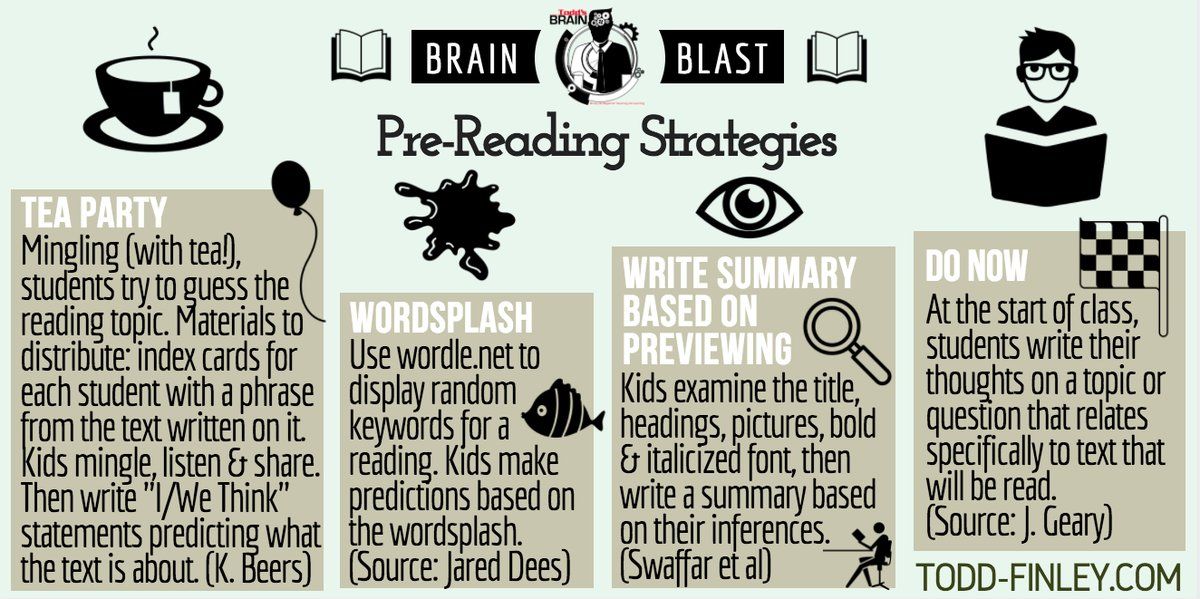 When reading, there is a revision and explanation of the marks.
When reading, there is a revision and explanation of the marks.  The strategy allows you to guide the discussion text while reading.
The strategy allows you to guide the discussion text while reading.  2 Reading with stops
2 Reading with stops 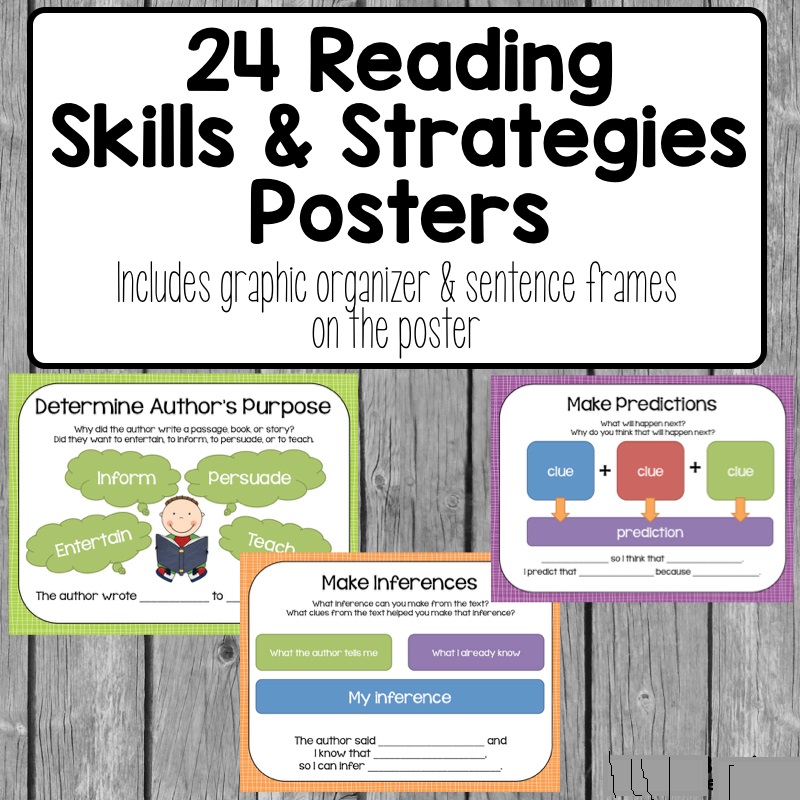 The recording form is given in the textbook Prantsova G.V., Modern reading strategies: theory and practice. Semantic reading and work with text: textbook / G. V. Prantsova, E.S. Romanichev. - 2nd ed., corrected. and additional - M . : FORUM, 2015. - S. 62-63.
The recording form is given in the textbook Prantsova G.V., Modern reading strategies: theory and practice. Semantic reading and work with text: textbook / G. V. Prantsova, E.S. Romanichev. - 2nd ed., corrected. and additional - M . : FORUM, 2015. - S. 62-63. 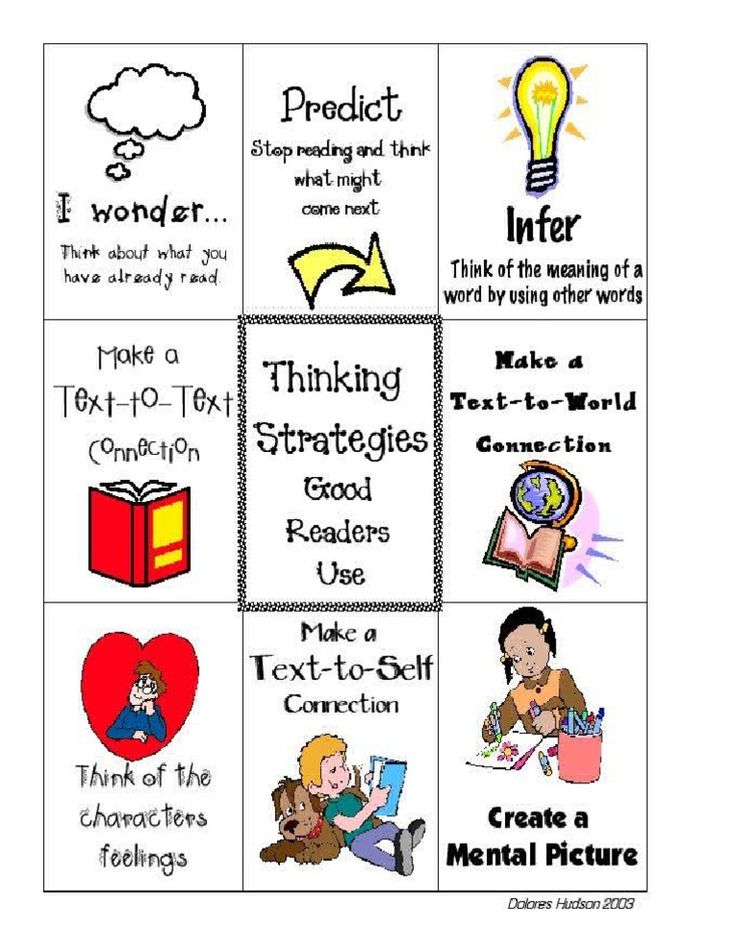 3. Checklist
3. Checklist 
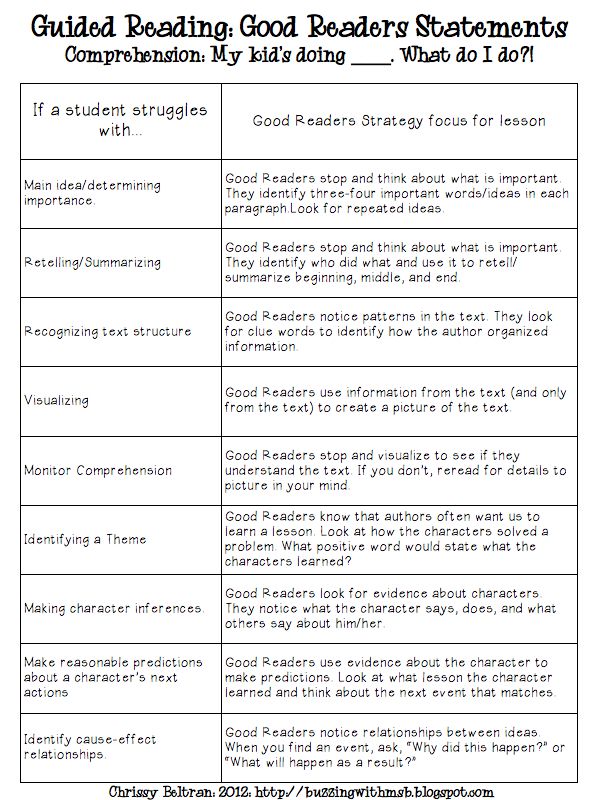
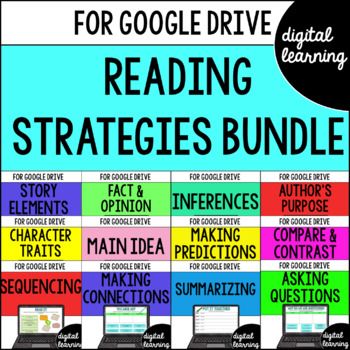 The task is to speak out reading a piece of text according to the role. For example, an expert presents the content of the material in the categories "interesting, known, difficult, unclear", the reporter summarizes what the expert said in the form of indirect speech, the observer comments on their work.
The task is to speak out reading a piece of text according to the role. For example, an expert presents the content of the material in the categories "interesting, known, difficult, unclear", the reporter summarizes what the expert said in the form of indirect speech, the observer comments on their work. 